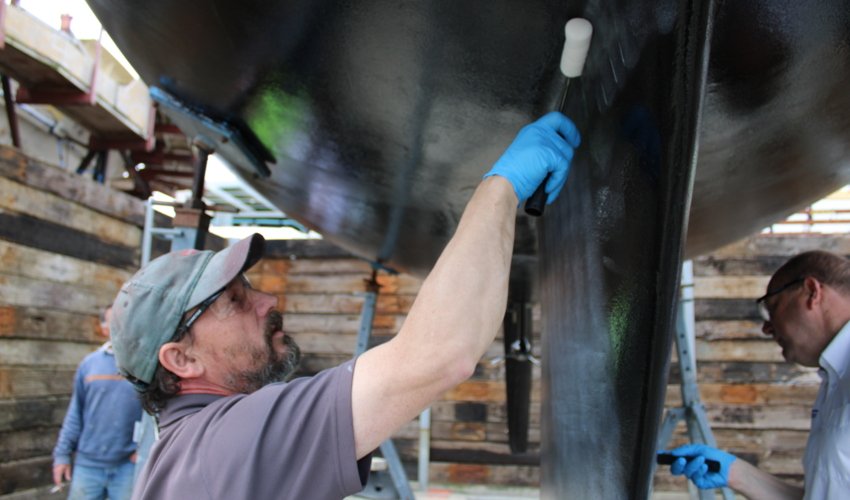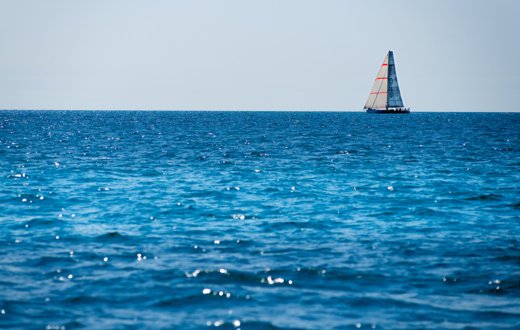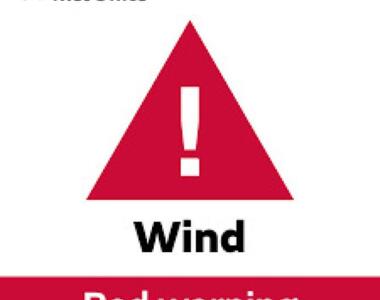-
Bangor Marina Bangor, Northern Ireland
-
Conwy Marina Conwy, North Wales, Wales
-
Deacons Marina River Hamble, Southampton, England
-
East Cowes Marina East Cowes, Isle of Wight, England
-
Haslar Marina Haslar, Portsmouth Harbour, England
-
Penarth Marina Penarth, Cardiff, Wales
-
Portishead Marina Portishead, Bristol, England
-
Portland Marina Portland, Dorset, England
-
Rhu Marina Rhu, Firth of Clyde, Scotland
-
Royal Quays Marina Royal Quays, North Shields, England
-
Weymouth Marina Weymouth, Dorset, England

3rd November 2024
Portland
Marina Safety Spotlight: Antifoul
Antifoul has been a necessary evil of boat maintenance for centuries and, whilst the paint going on the bottom of your hull has evolved from sticky black tar to a complex cocktail of copper and chemicals designed to keep your boat free of underwater forestry, the process hasn't changed all that much and it's still a nasty job to tackle. So let's look at how to make it as smooth and safe a task as possible.
Preparation is key
The old adage with antifoul paint is to just 'slap it on', but it's not worth going to the effort of antifouling your boat if you're slapping it onto a flaky, badly prepared surface! Antifoul dust is not something you want in your lungs though (smurf bogeys anyone?), so make sure you're fully PPE'd up with a dust mask and protect your peepers with good quality protective goggles. Protect the environment too, by laying a tarpaulin or sheet down to catch any dust and, ideally, use a vaccum connected to your sander to hoover up the nasty particles before they can get into the air. It's also worth considering wet sanding to reduce the risk of breathing toxic dust in. A sanding mesh such as Abranet on a swivel sanding head and pole makes short work of taking the worst off.
The paint job
If you're not already looking like you're wearing a DIY astronaut costume, now's the time to don all the gear. The nasties in antifoul which make it an effective biocide also make it not nice for you too so protect your skin and clothing with gloves (Marigolds are perfect and you don't have to wear pink ones!) and a protective suit with a hood. Take a wander around any boat yard and you'll see an array of different solutions to protective clothing, from shower caps to old shopping bags wrapped around feet and head.
The quickest and easiest way to get the paint on is by roller, but they do have a tendency to flick paint back onto you especially if you're painting above your head, so those goggles and mask are absolutely imperative. Make sure you're in a well ventilated area and dispose of any leftover paint, empty tins or used roller heads and brushes in the appropriate bin in our haz waste area.
Of course, another way of minimising the risk from toxic paints is to not use them at all! There are more and more biocide free options coming on the market, with Copper Coat and Hempel's Silic One the most popular at present. Our boatcare team can advise on their suitability for your boat and the costs involved. If you're stuck with traditional antifoul paint for now, they can also do that for you too.
This article from Practical Boat Owner is a great guide to all things antifoul, from preparation through to the right paint for your boat. There's also this guide from Motorboat and Yachting on the biocide free coating available, putting them to the test in a real world situation.





















